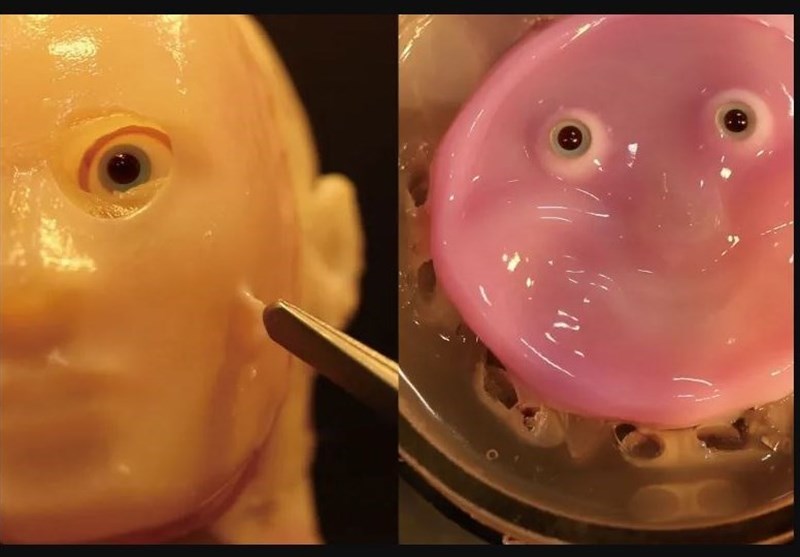Japanese Scientists Graft Living Skin onto ‘Smiling’ Robot
TEHRAN (Tasnim) – Japanese scientists have developed a technique to attach self-healing, living skin to a robot face and make it “smile”.
The scientists, led by professor Shoji Takeuchi at the University of Tokyo’s Biohybrid Systems Laboratory, connected cultured skin tissue in the likeness of a human face to an actuator -an external mechanical device- using “anchors” that mimic skin ligaments.
In a video released by the team, the scientists can be seen manipulating the skin into a smile without causing the tissue to bunch, tear or get stuck in place.
Previous efforts to attach tissue made from human cells to a solid surface would result in the skin being damaged when in motion.
While Takeuchi’s fleshy pink blob bears greater resemblance to a children’s animated character than a human face, researchers hope the breakthrough will pave the way to realistic humanoids in the future.
Buoyed by the results, Takeuchi is now looking at the bigger picture.
“Our cultured skin aims to replicate the full range of biological functions found in human skin, including the activity of facial muscles, sweat glands, sebaceous glands, pores, blood vessels, fat, and nerves,” he told Al Jazeera.
“This comprehensive functionality would enable more lifelike and interactive robotic applications.”
Biohybrid robotics advocates believe that such advances could one day herald a societal revolution where humans live alongside humanoids that look and act identical to real people.






